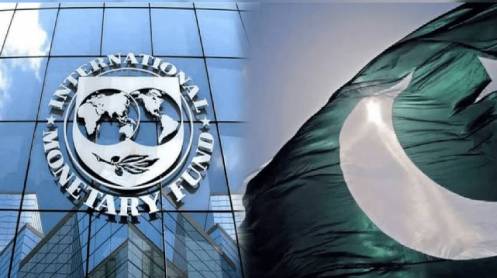International Monetary Fund (IMF) Managing Director Kristalina Georgieva on Thursday said that Pakistan is in discussions with the Fund on a potential follow-up programme to the previous nine-month $3 billion stand-by arrangement (SBA), adding that important issues remained to be solved.
Georgieva told an event at the Atlantic Council think tank, that Pakistan was successfully completing its existing programme with the IMF and the economy was performing somewhat better, with reserves now being built up.
“There is a commitment to continue on this path and the country is turning to the Fund for potentially having a follow-up programme,” Georgieva said, flagging issues that the country still needed to address.
“There are very important issues to be solved in Pakistan: the tax base, how the richer part of society contributes to the economy, the way public spending is being directed and of course, creating … a more transparent environment.”
The newly elected government and the IMF last month reached a staff-level agreement (SLA) on the second and last review of the $3bn SBA, which, if cleared by the global lender’s board, will release about $1.1bn in funds. The IMF’s board is expected to review the matter in late April, but no firm date has been set, a spokesperson said.
Both sides have also spoken about negotiating a longer-term bailout and continuing with necessary policy reforms to rein in deficits, build up reserves and manage soaring debt servicing.
Finance Minister Muhammad Aurangzeb had last month expressed the hope for reaching an SLA with the IMF by the end of the fiscal year (June 30).
The finance minister had said that details of the deal would be discussed during the spring meetings, and he would lead a delegation to Washington around April 14 to 15.
Aurangzeb had said the Fund was “very receptive” to a “larger and longer programme” in his recent communications with them.
Prime Minister Shehbaz Sharif, after being sworn in for a second time, had directed his finance team to begin work on seeking an extended fund facility from the IMF.
He had said that Islamabad needed another bailout package from the Fund, which he had linked to across-the-board structural and economic reforms.
Shehbaz had stressed that the newly elected government would have to work towards a medium-term programme which would have a duration of two-to-three years.
Next IMF programme
In its end-of-mission statement announcing last month’s SLA on the successful completion of an existing short-term facility, the IMF had said Pakistan “expressed interest in a successor medium-term Fund-supported programme with the aim of permanently resolving Pakistan’s fiscal and external sustainability weaknesses, strengthening its economic recovery, and laying the foundations for strong, sustainable, and inclusive growth”.
It said that during the SLA talks, the Fund also laid bare the broader, though well-known, conditionalities of the next programme on which “discussions are expected to start in the coming months”.
As in the past programmes, four central areas would remain under focus for reforms. The top objective of the next medium-term programme — Extended Fund Facility of about 36 to 39 months — would be strengthening public finances, including through gradual fiscal consolidation and broadening the tax base, especially in under-taxed sectors (read real estate, retail and wholesale trade and agriculture) and improving tax administration to improve debt sustainability and create space for higher priority development and social assistance spending to protect the vulnerable.
The second objective of the next programme would be restoring the energy sector’s viability by accelerating cost-reducing reforms, including through improving electricity transmission and distribution, moving captive power demand to the electricity grid, strengthening distribution company governance and management, and undertaking effective anti-theft efforts.
The third key objective would be returning inflation to the target, with a deeper and more transparent flexible foreign exchange market supporting external rebalancing and rebuilding foreign exchange reserves.
The fourth and last critical aim would be promoting private-led activity through the above-mentioned actions as well as the removal of distortionary protection, advancement of reforms on state-owned enterprises to improve the sector’s performance, and the scaling up investment in human capital to make economic growth more resilient and inclusive and enable Pakistan to reach its economic potential.





